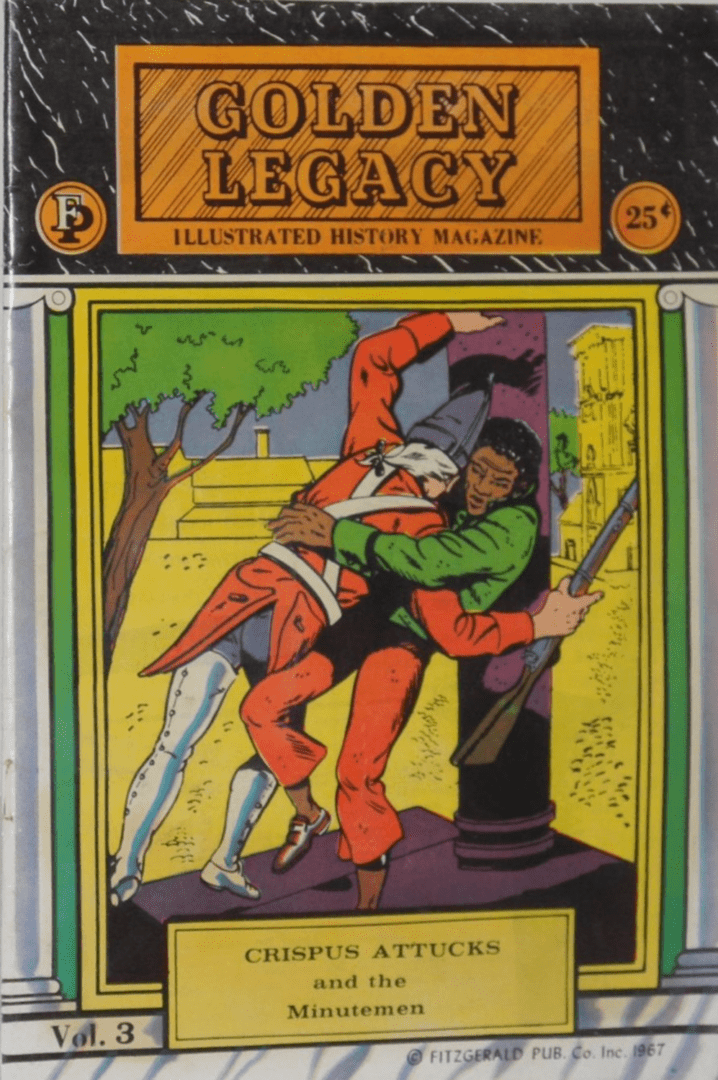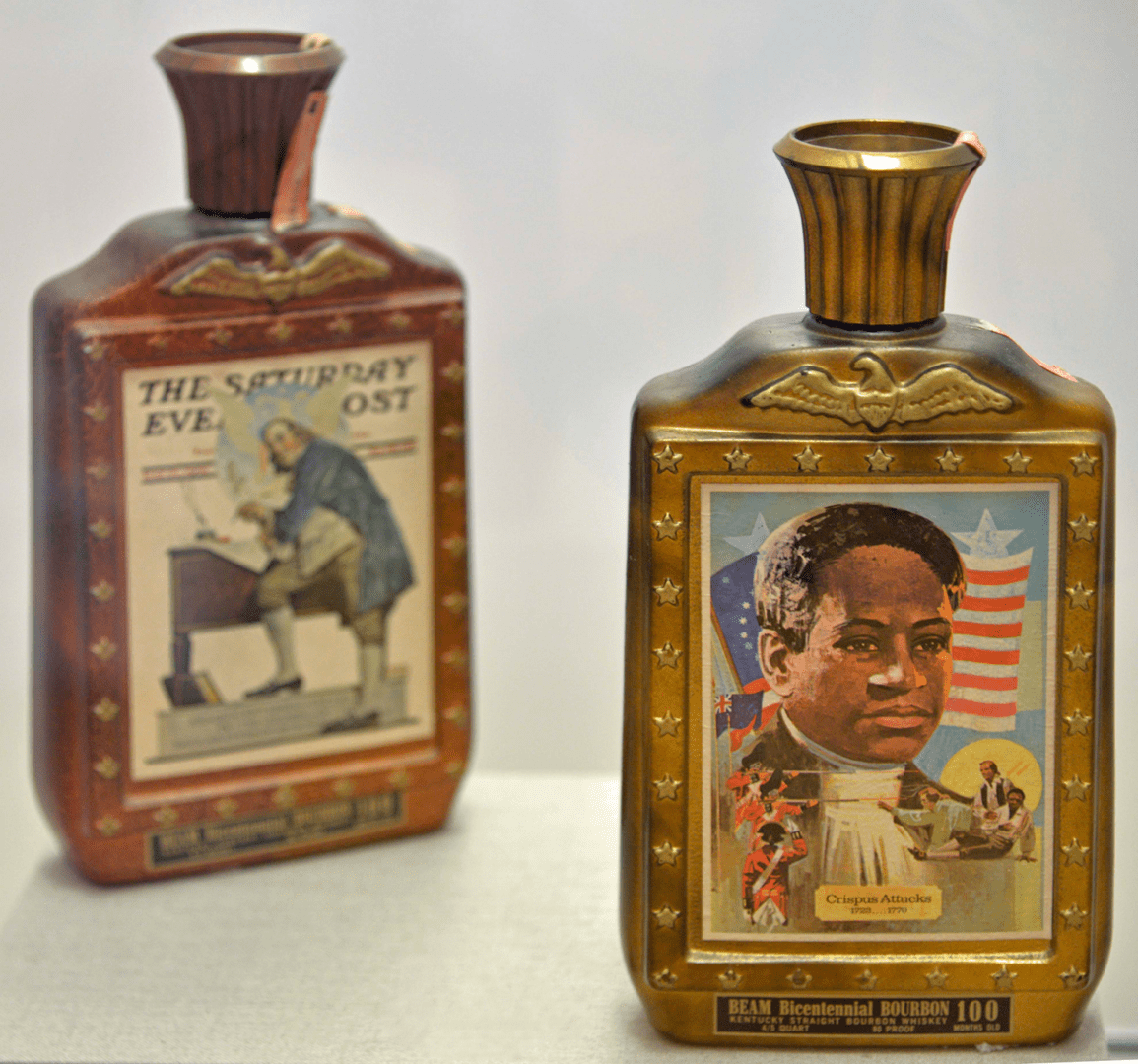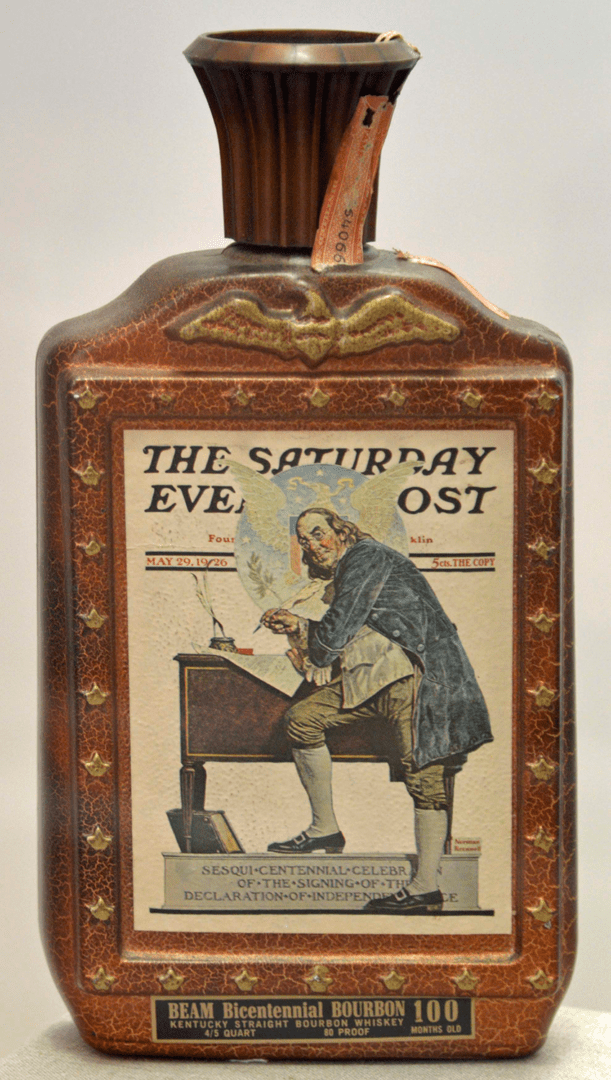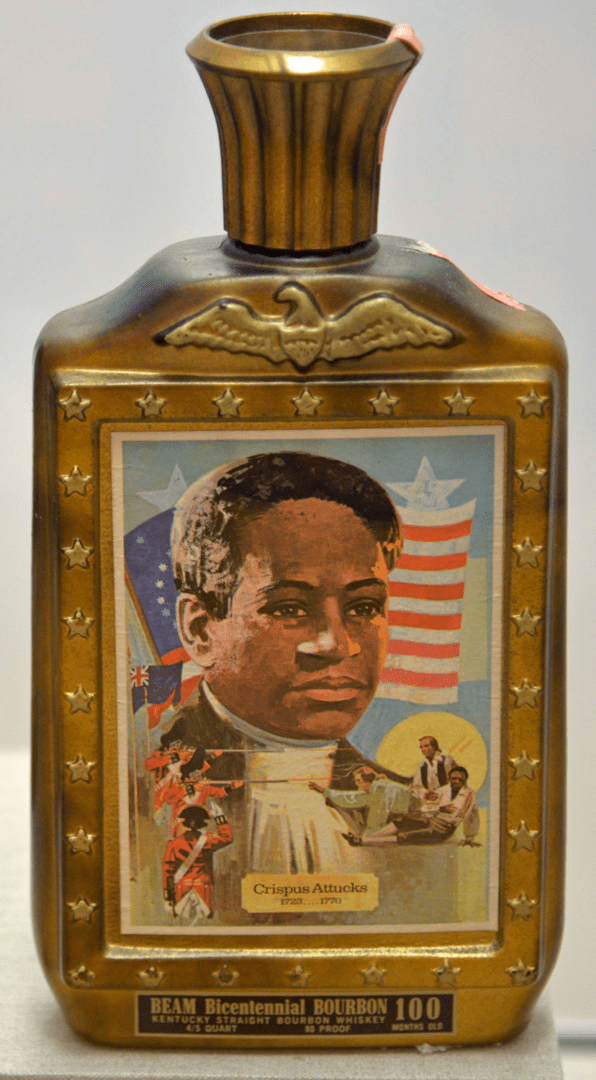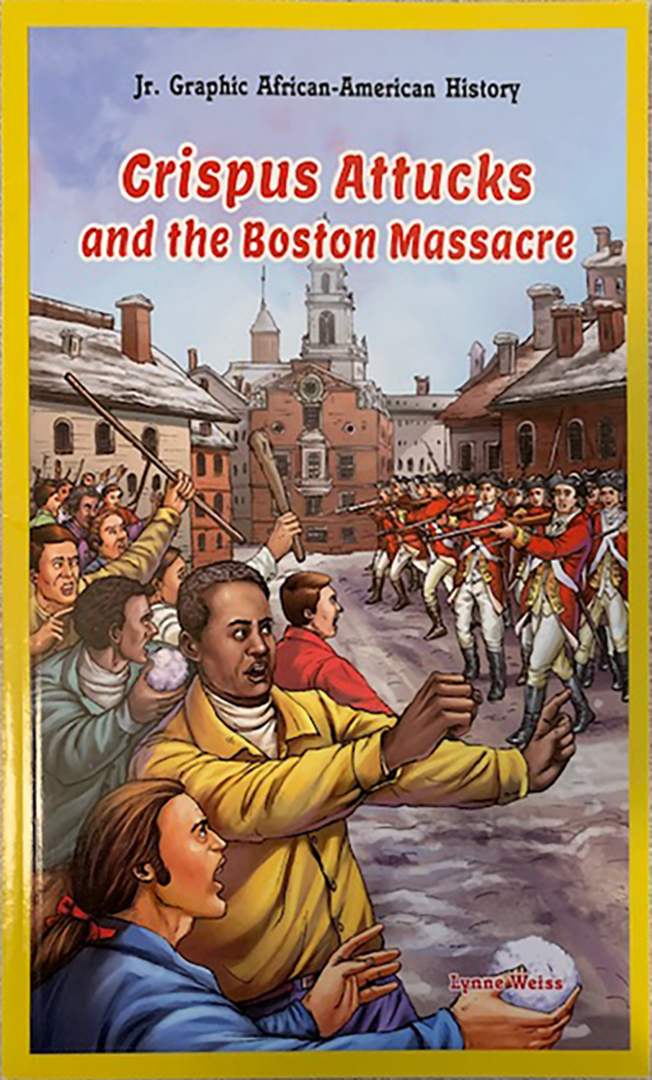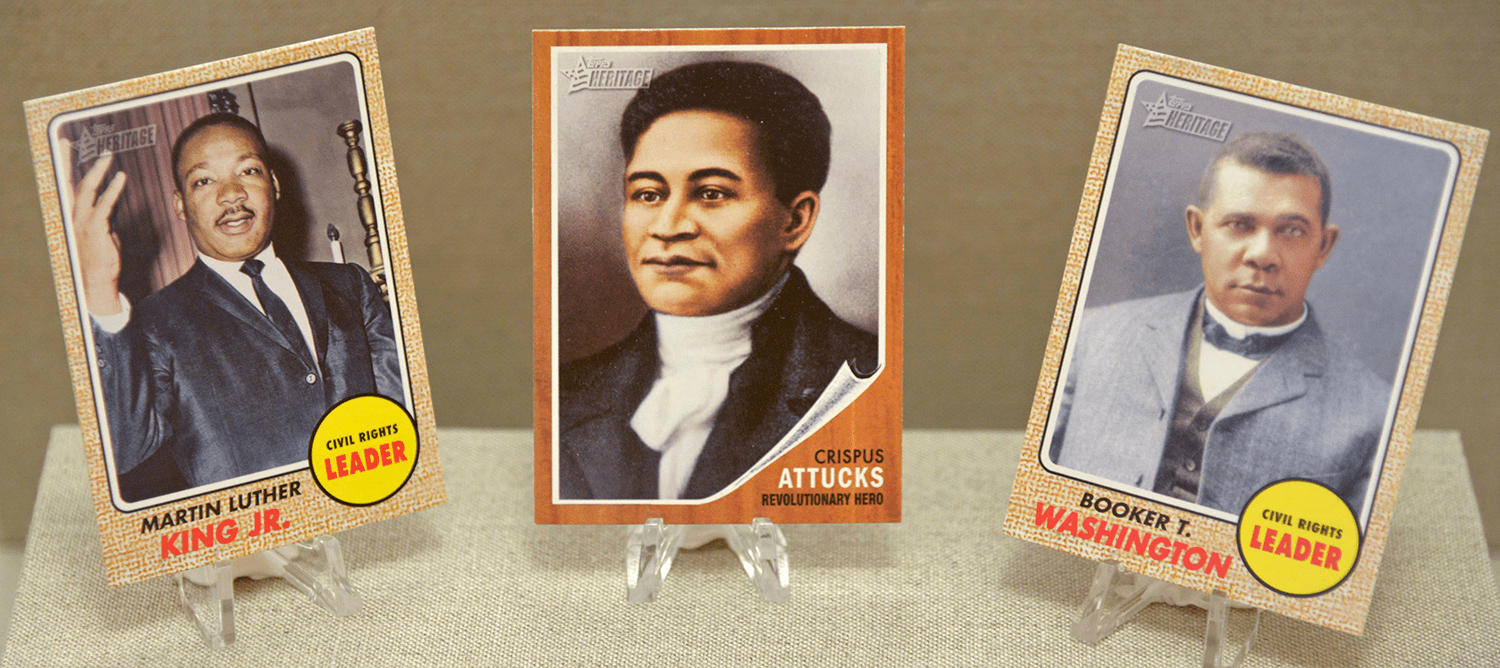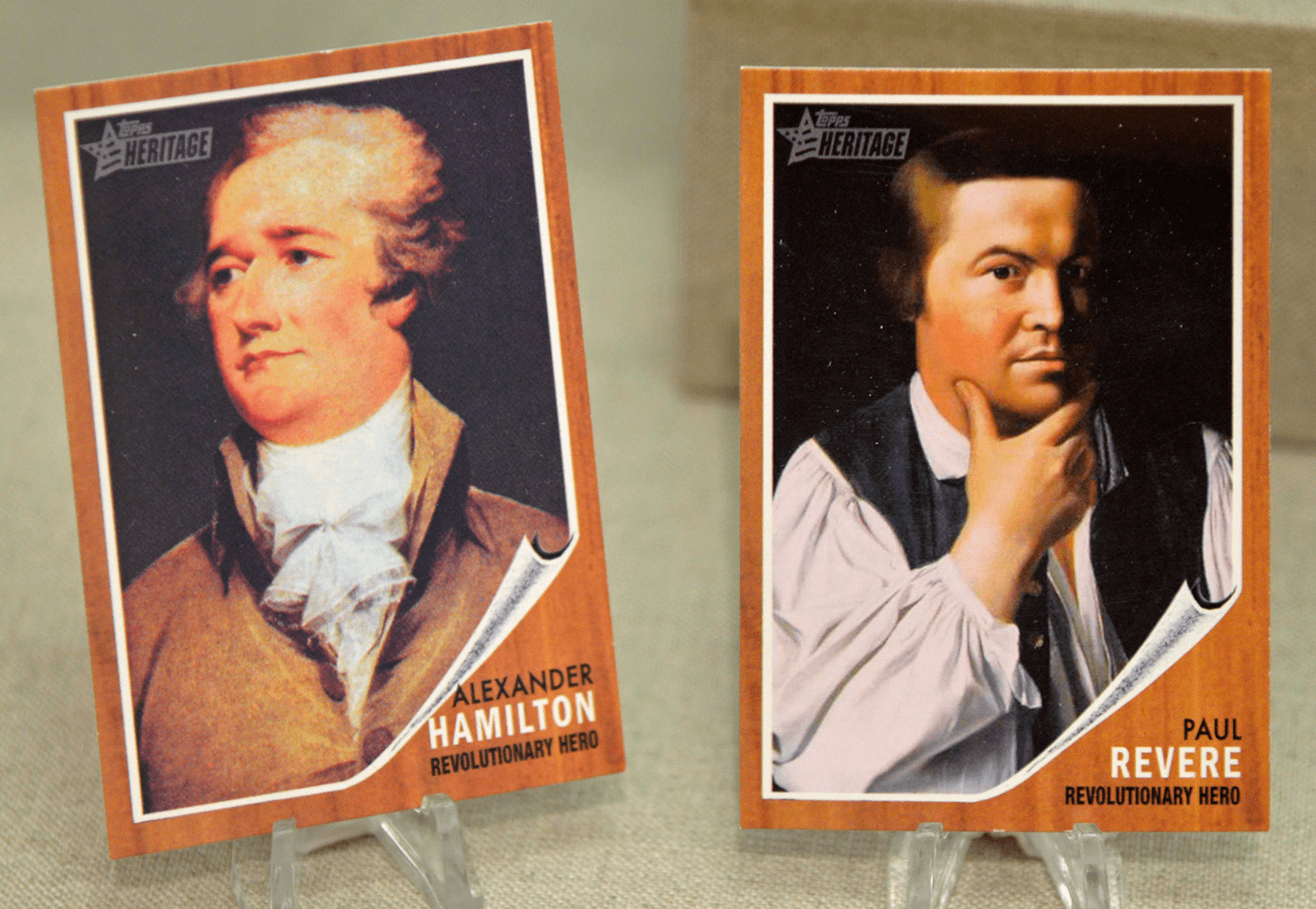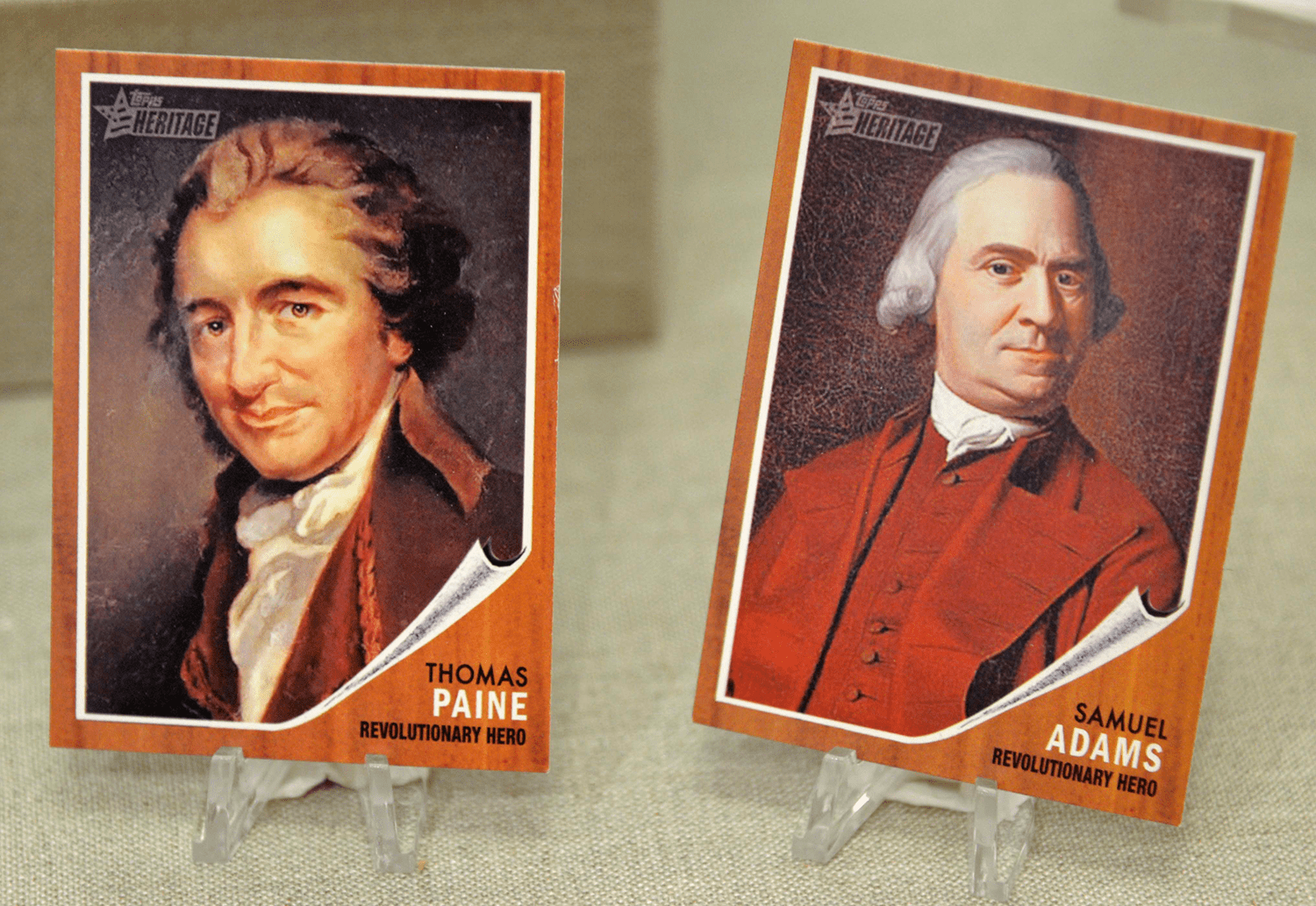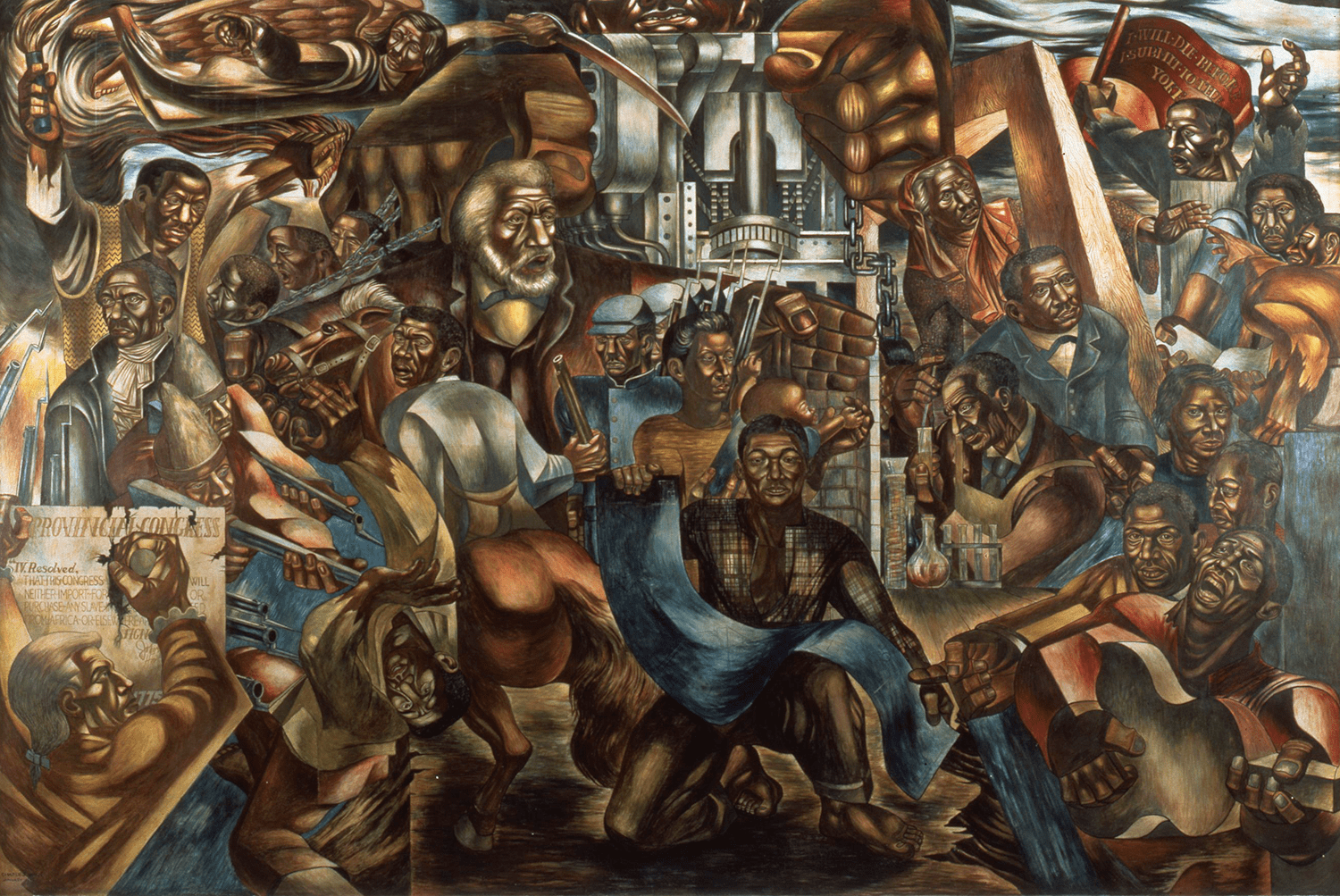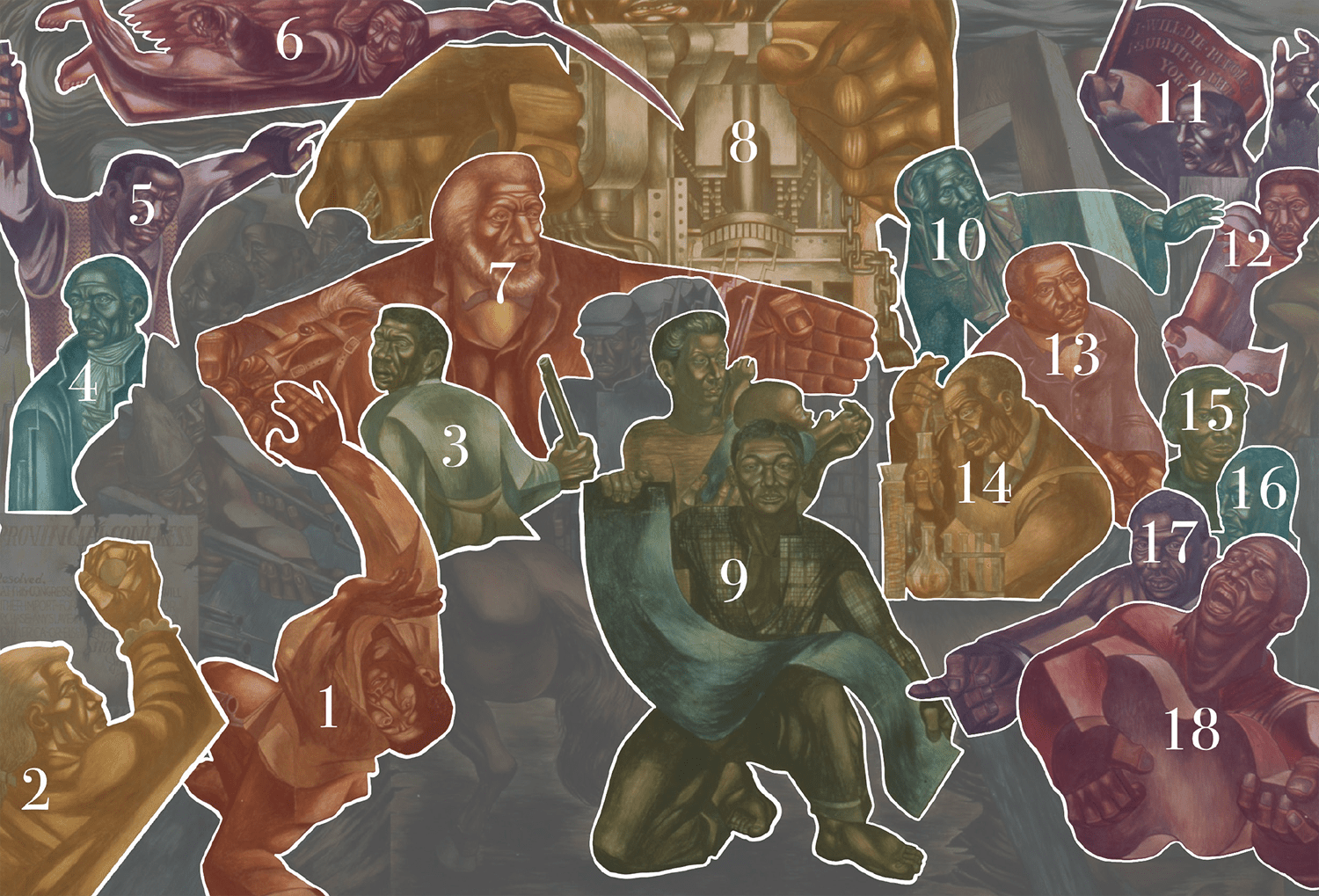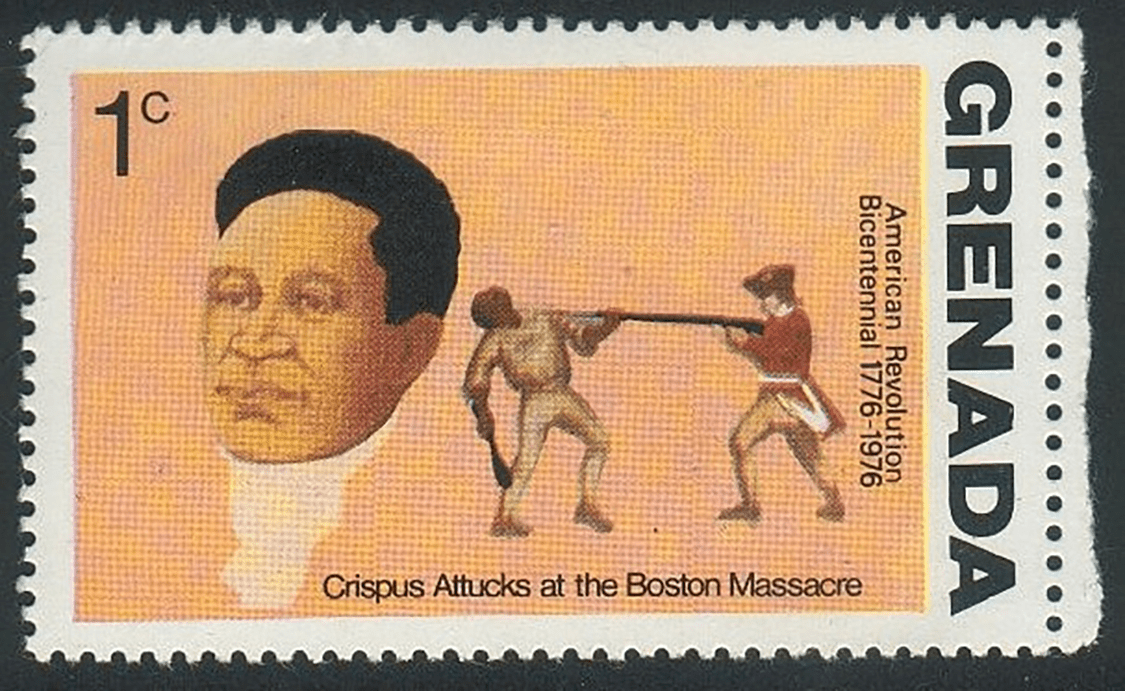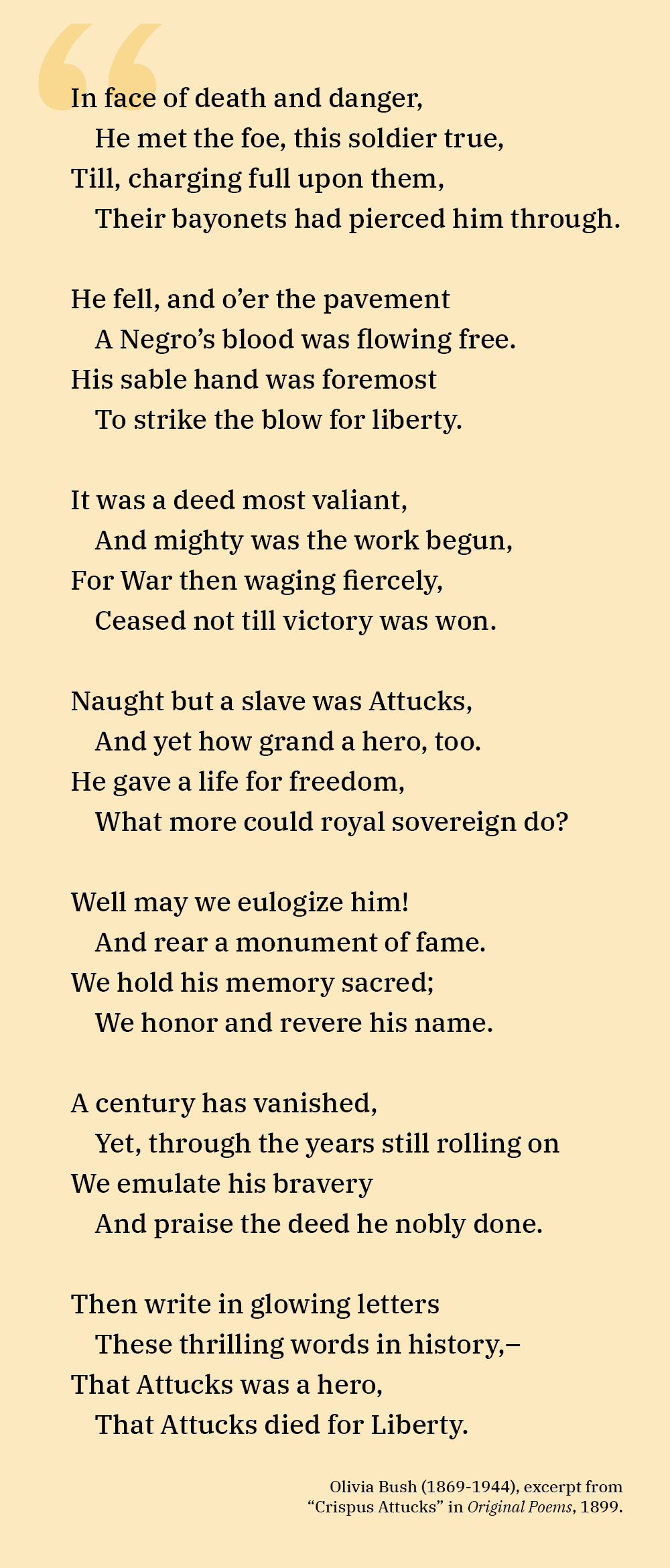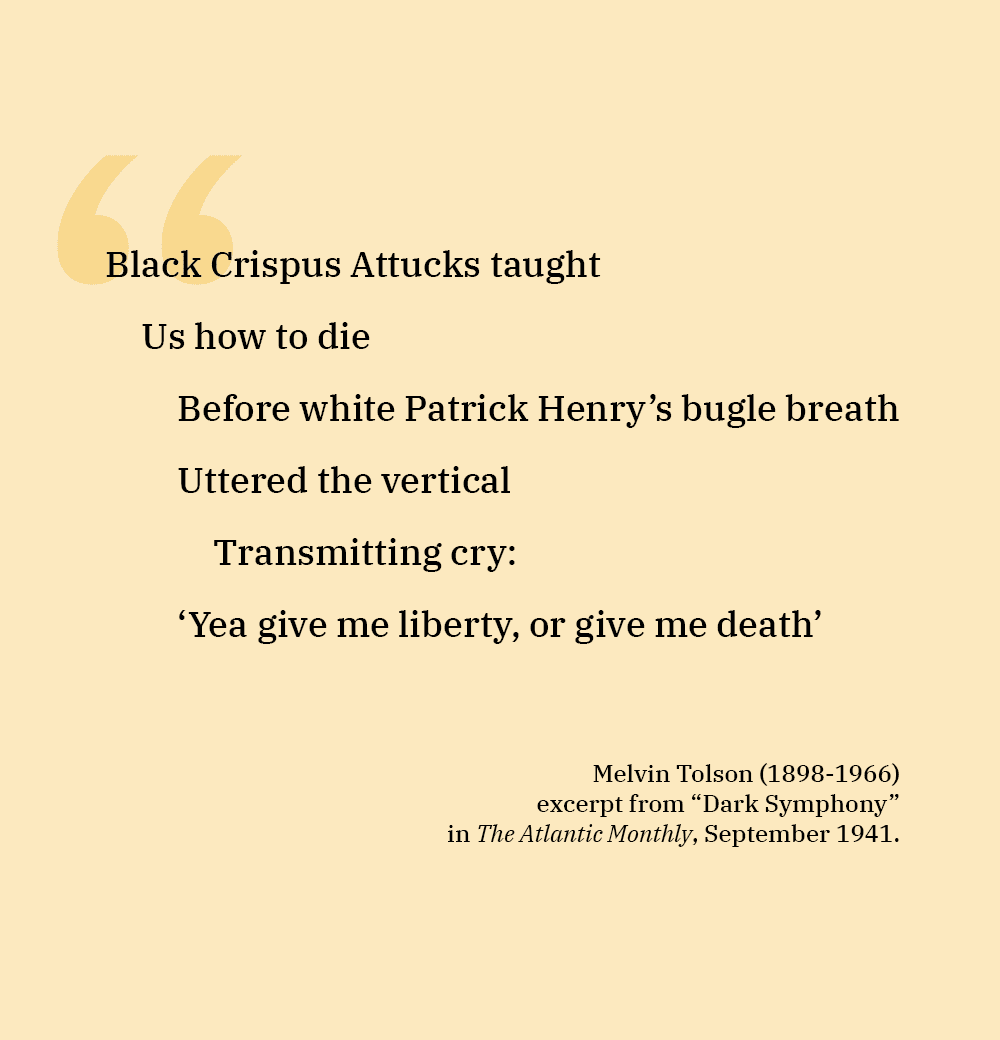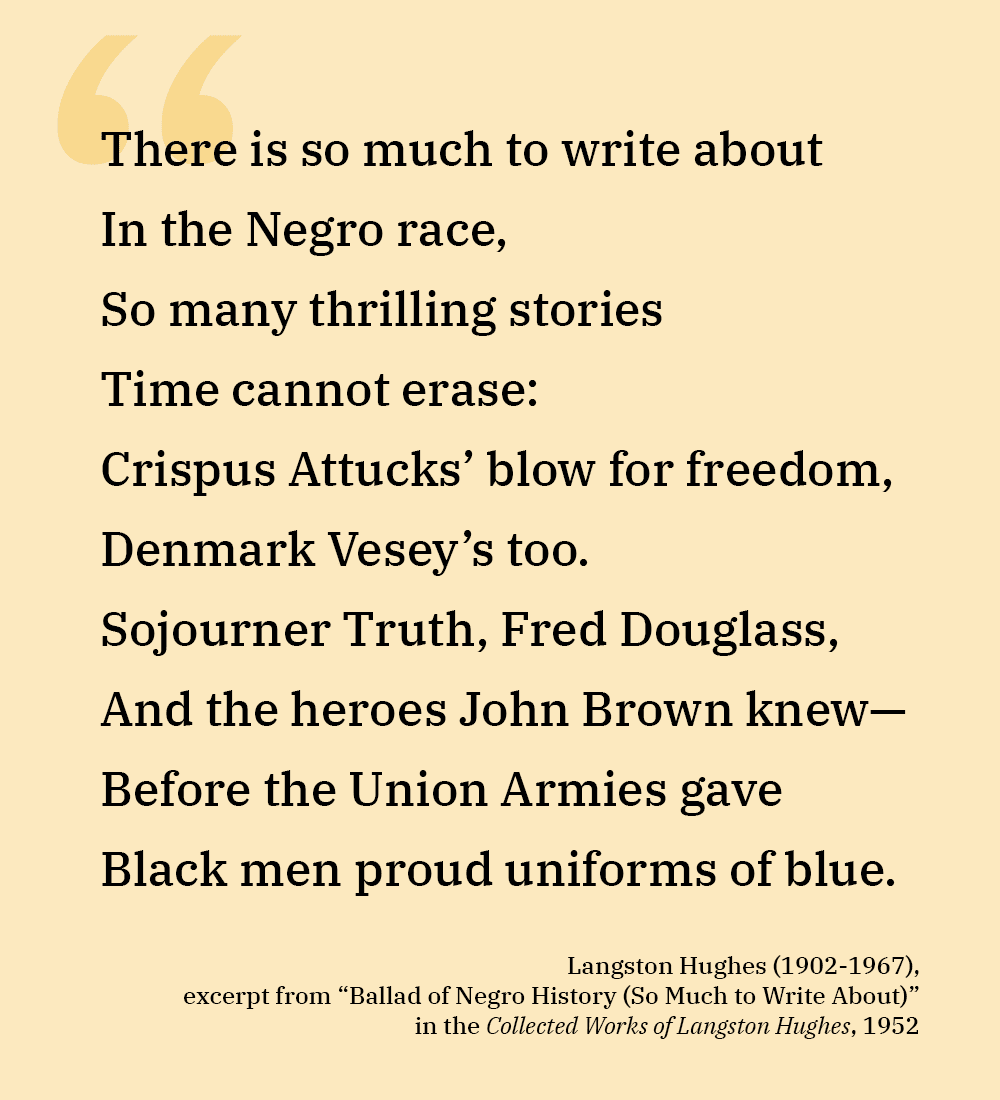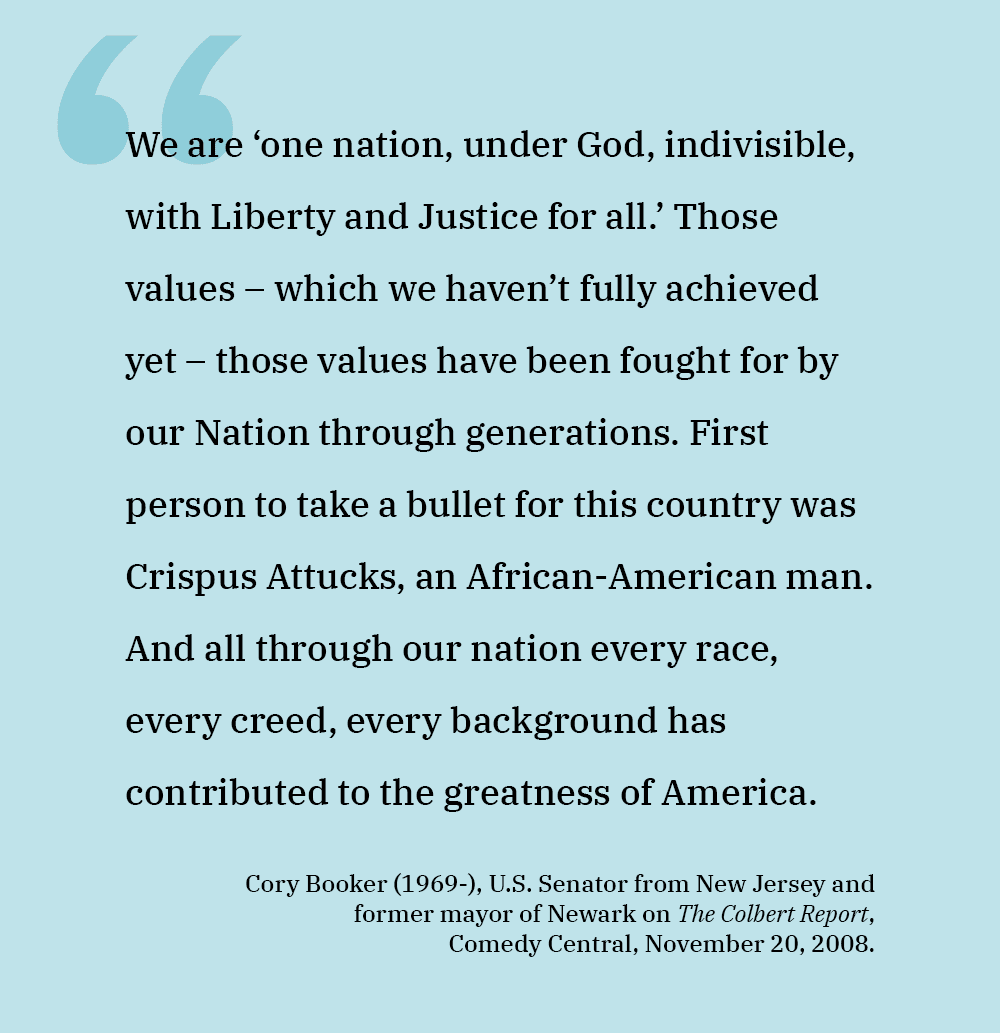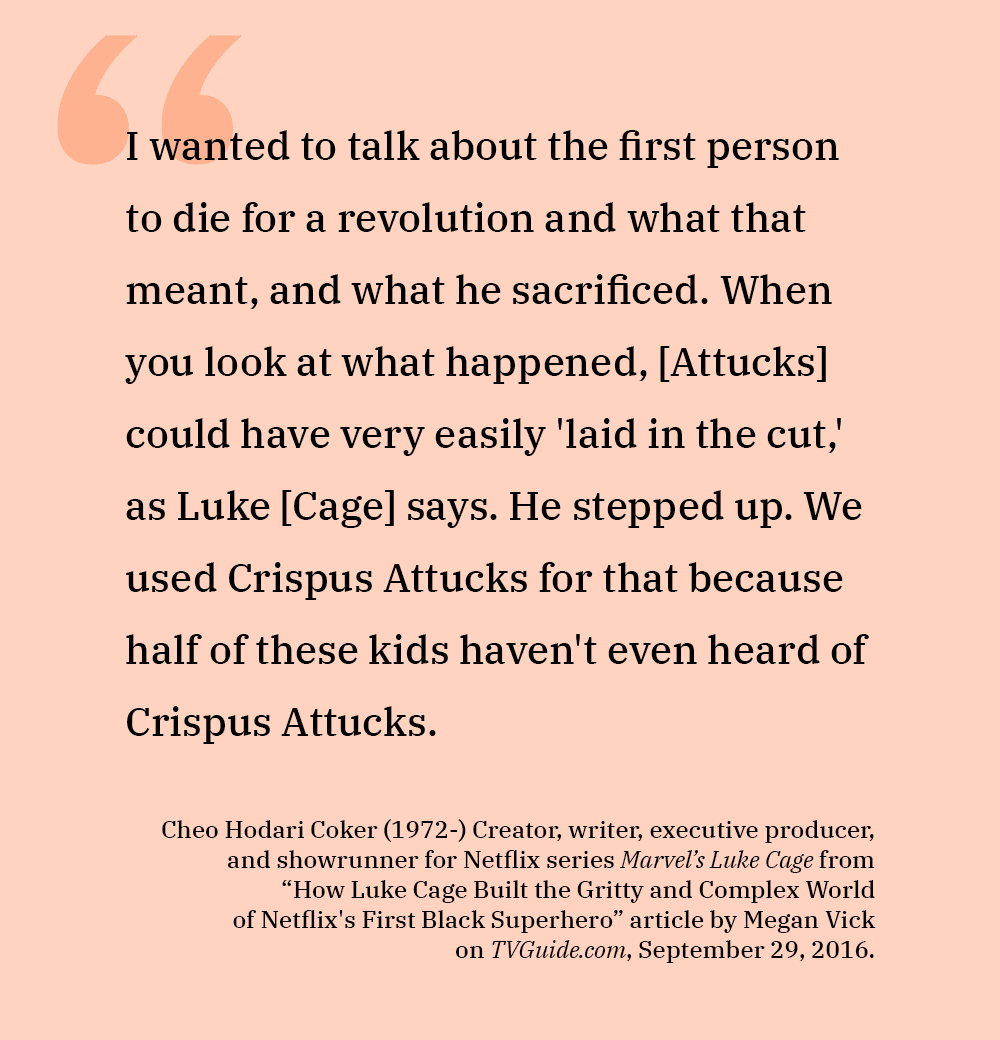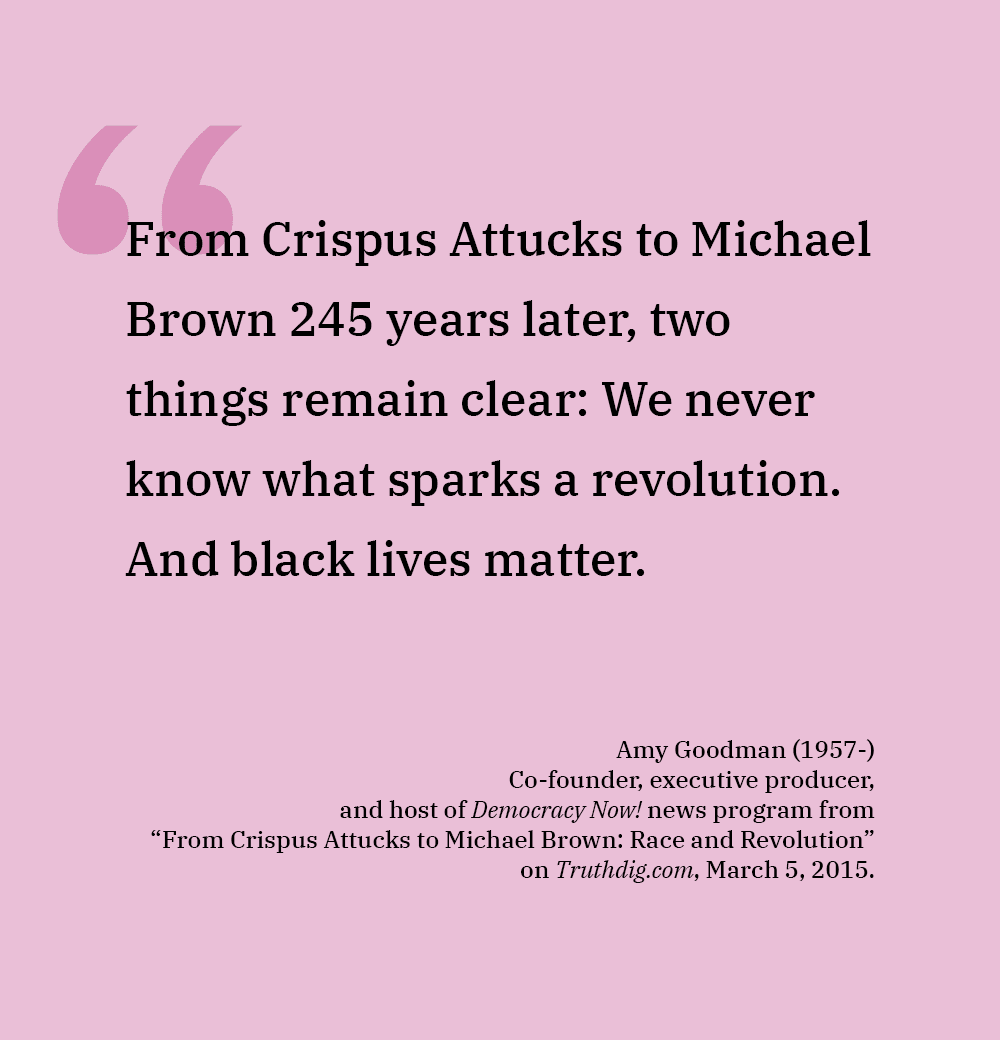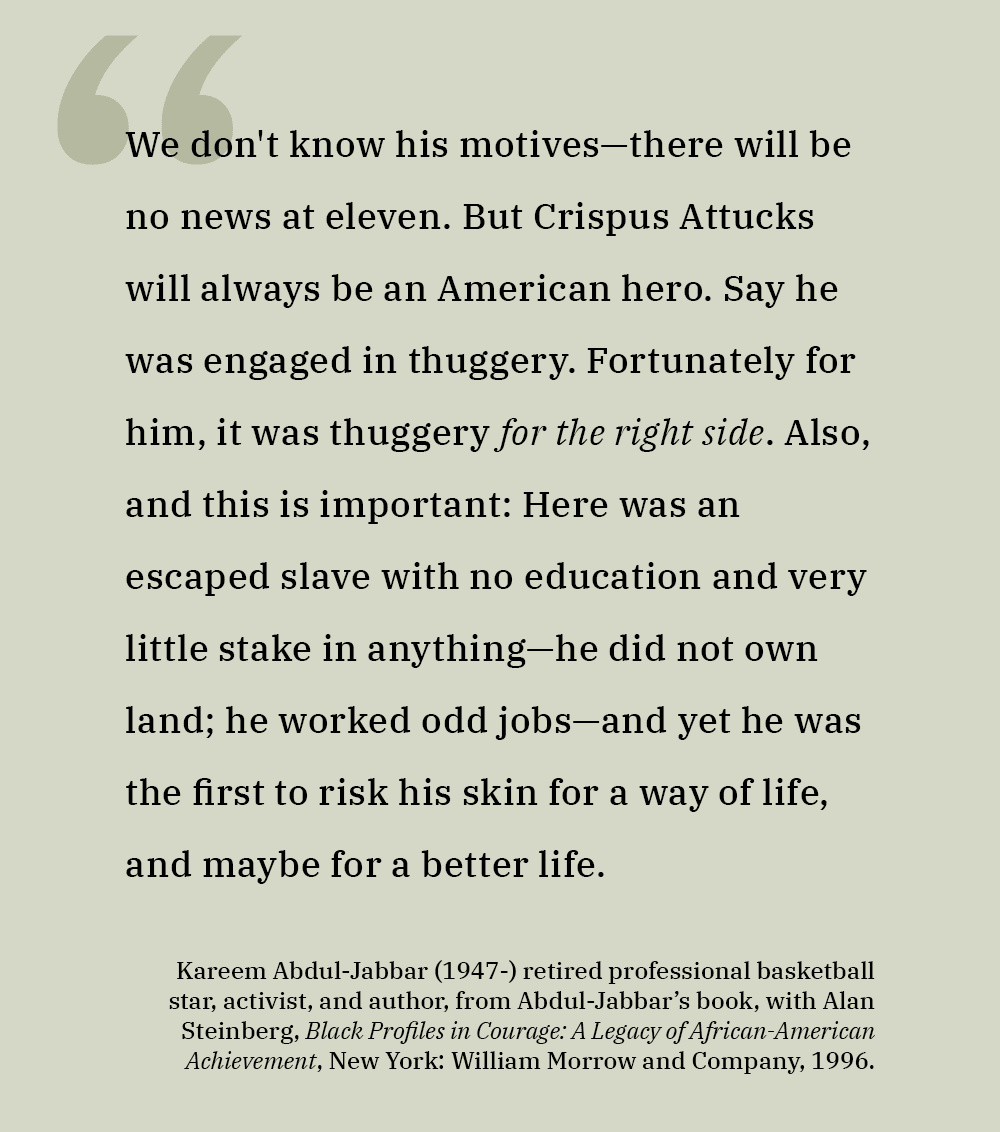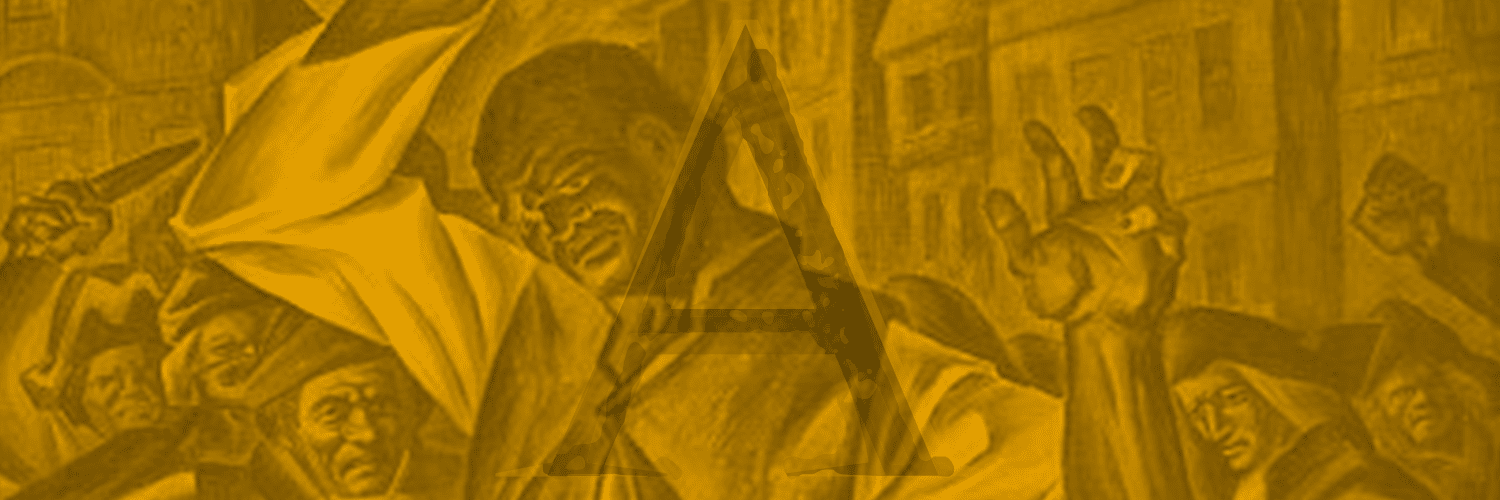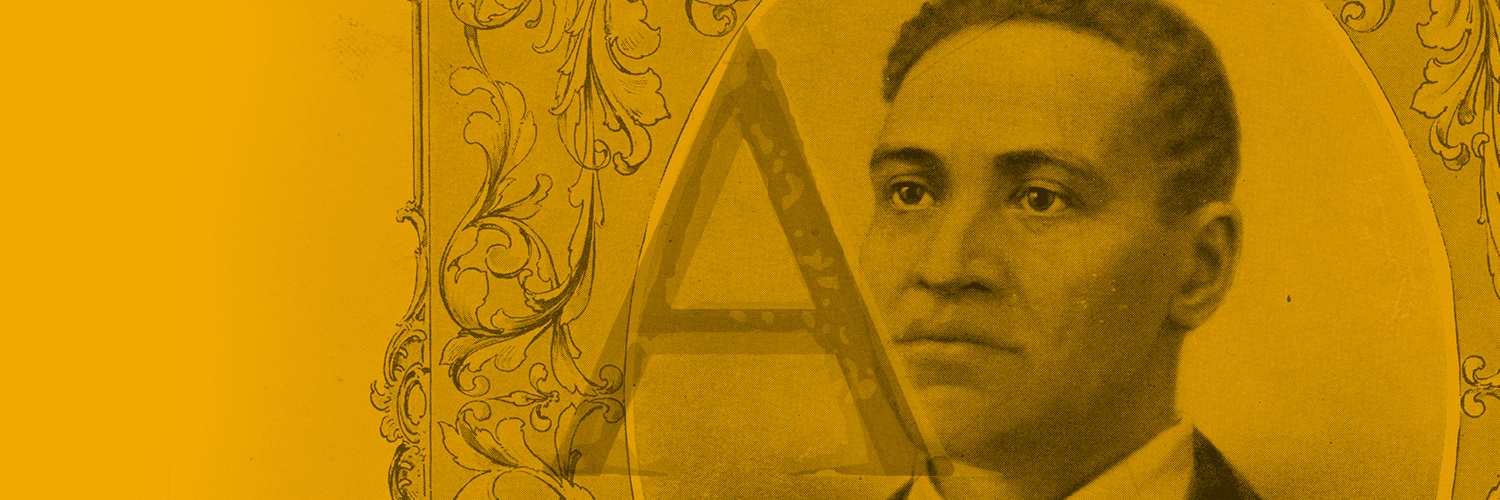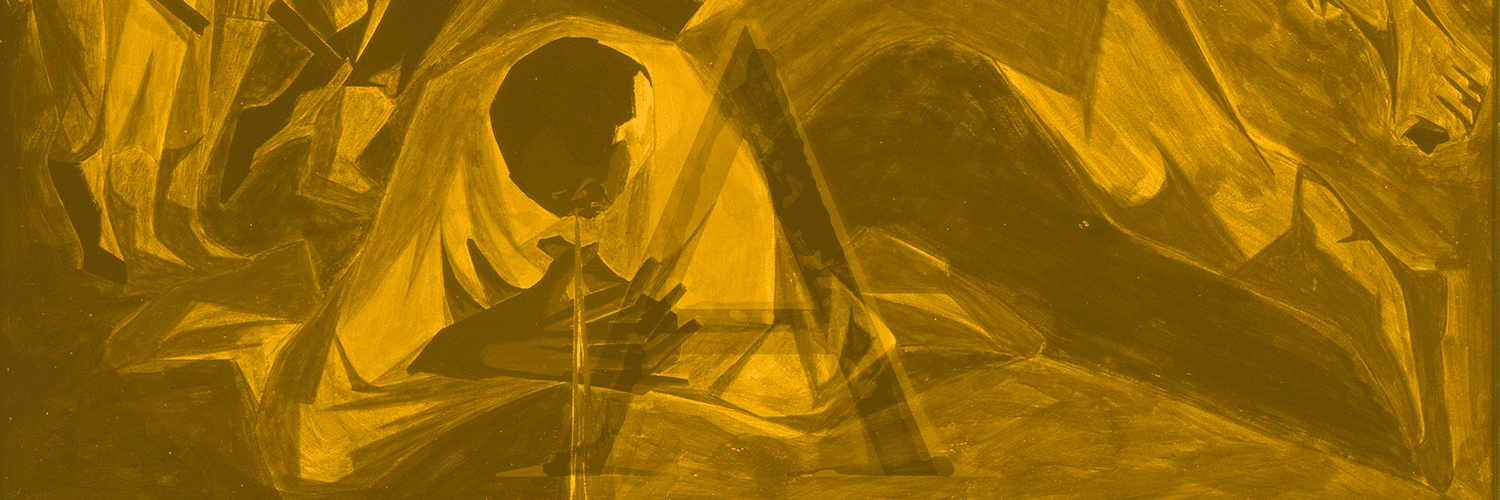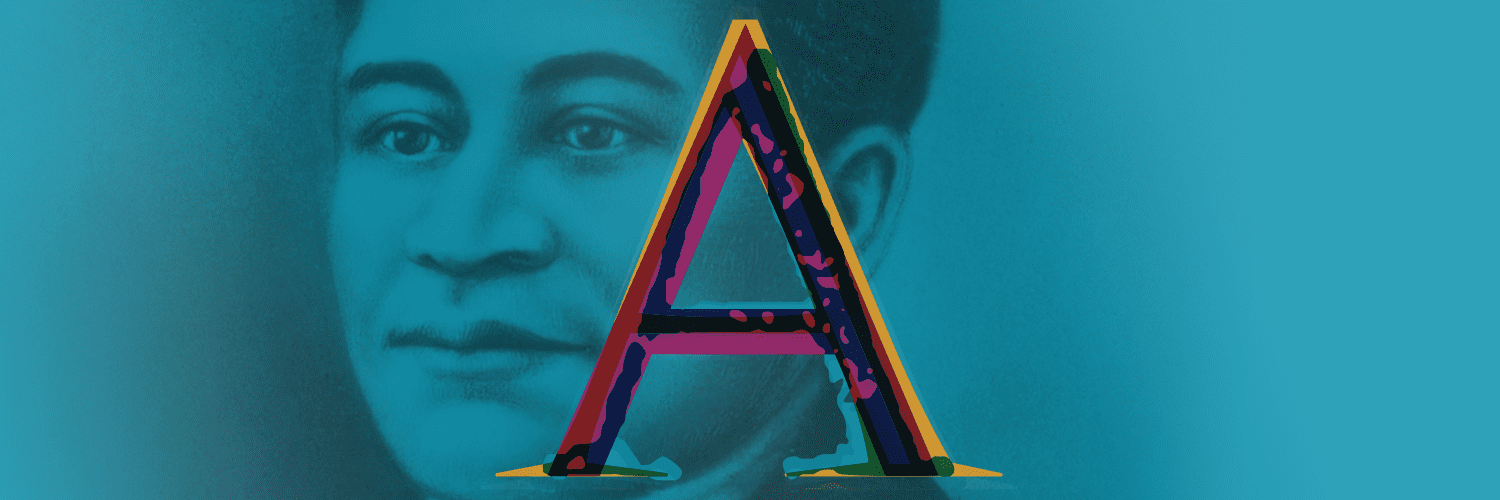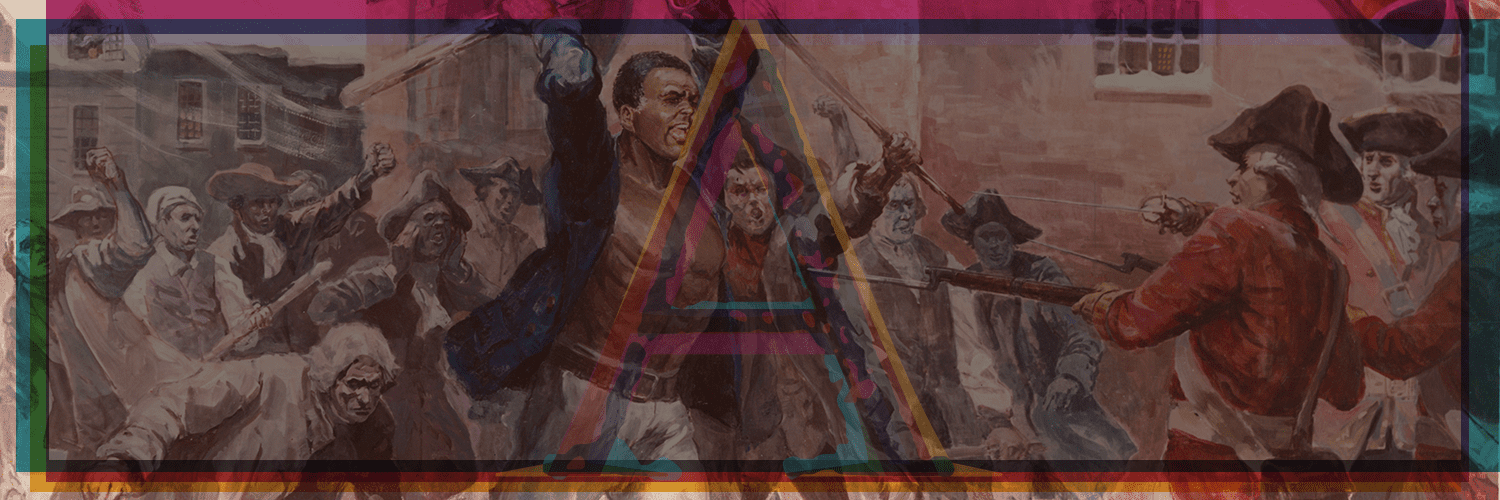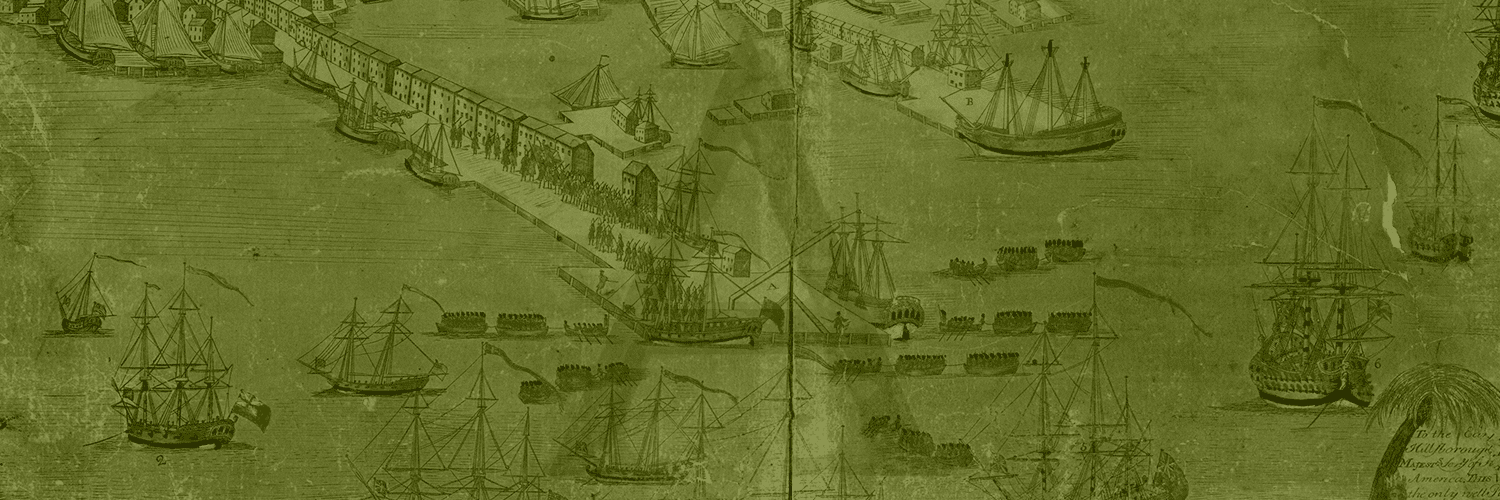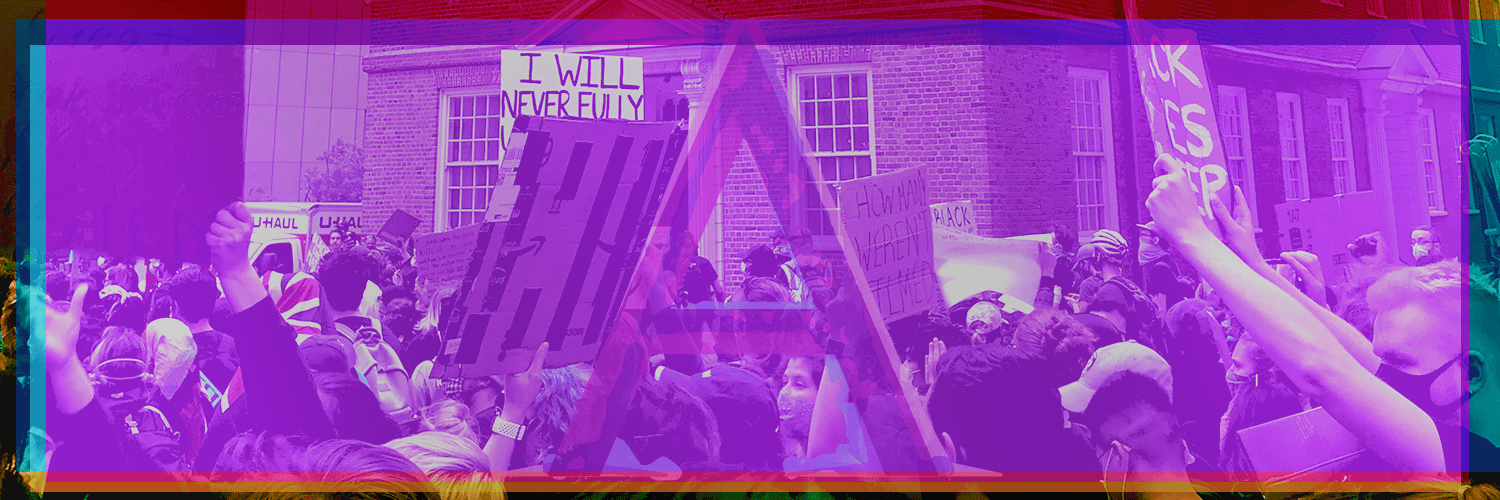An American Hero
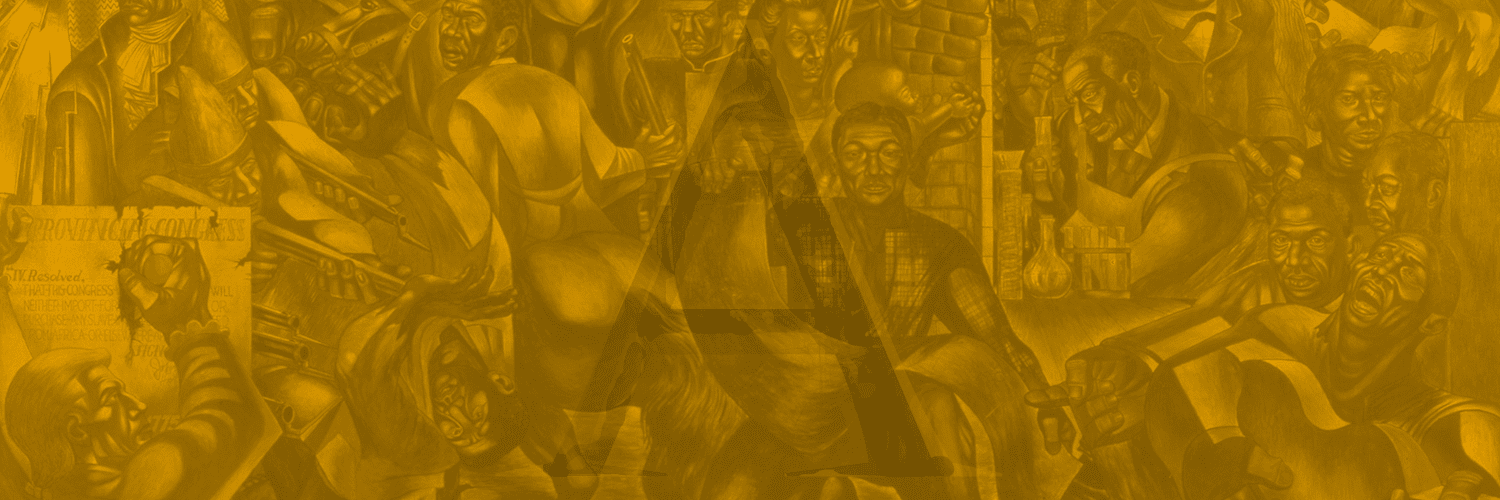
These pieces show Attucks as a member of a group of American heroes. Hailed as a champion of the oppressed and an avatar of black patriotism, Crispus Attucks is here represented as a hero, spoken of in the same breath as “Founding Fathers” and martyrs to the cause of liberty.
How does Attucks’s meaning change depending on the heroes who surround him?
CRISPUS ATTUCKS AND THE MINUTEMEN
Golden Legacy Illustrated History Magazine
1967
Fitzgerald Publishing Co., Inc.
Museum purchase
Click image to view larger.
Golden Legacy magazines were a series of 16 African-American history magazines published for children from the late-1960s to the mid-1970s. Seen here is Vol. 3, Crispus Attucks and the Minutemen, which offers a fictional account of Attucks as a political leader in Boston. On these pages, Attucks calls for a community meeting at Old South Meeting House and offers support for prominent activist James Otis, Jr. (1725-1783). There is no evidence that Attucks engaged in these specific activities, but the images and story support a narrative of Attucks as one of the nation’s founders.
CRISPUS ATTUCKS AND BENJAMIN FRANKLIN DECANTERS
Jim Beam
Bourbon Whiskey
1976
Museum purchase
Click images to view larger.
These are two of seven decanters issued by the James Beam Distilling Company in 1976 to commemorate the Bicentennial of the United States. Six, including this Benjamin Franklin decanter, were part of a series that featured Saturday Evening Post cover art by Norman Rockwell.
The seventh, depicting Crispus Attucks and the Boston Massacre, was the only decanter not in the series. Advertisements for “Beam’s 1976 Bicentennial Limited Edition” featuring a “contemporary portrait of American hero Crispus Attucks” ran in magazines for black audiences like Ebony and Black Enterprise.
CRISPUS ATTUCKS AND THE BOSTON MASSACRE
by Lynne Weiss
Jr. Graphic African-American History
2014
The Rosen Publishing Group, Inc.
Museum purchase
Click image to view larger.
This is one of six comics in the Jr. Graphic African-American History series, which uses visual retellings of historic events to engage young readers. The page on the left depicts a scene from the Faneuil Hall Commemorative Festival in 1858 and the installation of the Boston Massacre monument in 1888. The page on the right tells the story of Salem Poor (1747–1802), an African-American hero of the Revolutionary War.
CRISPUS ATTUCKS AND THE BOSTON MASSACRE
by Lynne Weiss
Jr. Graphic African-American History
2014
The Rosen Publishing Group, Inc.
Museum purchase
Click image to view larger.
This is one of six comics in the Jr. Graphic African-American History series, which uses visual retellings of historic events to engage young readers. The page on the left depicts a scene from the Faneuil Hall Commemorative Festival in 1858 and the installation of the Boston Massacre monument in 1888. The page on the right tells the story of Salem Poor (1747–1802), an African-American hero of the Revolutionary War.
THE CONTRIBUTION OF THE NEGRO TO DEMOCRACY IN AMERICA
Charles White (1918-1979)
1943
Egg tempera mural, Hampton University, Virginia
Reproduction from the Collection of the Hampton University Museum, Hampton, VA.
Click images to view larger
In 1942, Charles White (1918-1979) was awarded a $2,000 12-month grant to study and paint a mural. The central figure is in chains that loop around the necks of three other figures. Abolitionists Frederick Douglass (1818-1895), Nathaniel Turner (1800-1831), Denmark Vesey (1767-1822), and Harriet Tubman (1822-1913) are also represented, ready to break them free of their shackles. Crispus Attucks can be seen in the lower left being attacked by bayonets.
KEY
- Crispus Attucks
- Colonial Tory destroying bill forbidding slavery
- Peter Salem, Continental Army soldier
- Denmark Vesey, rebellion leader and former slave
- Nat Turner, rebellion leader
- Angel of Vengeance
- Frederick Douglass, abolitionist
- Allegorical Figure
- “Ideal” African American Family
- Harriet Tubman, abolitionist
- Peter Still, self-liberated former slave
- Sojourner Truth, abolitionist
- Booker T. Washington, civil rights leader
- George Washington Carver, scientist and inventor
- Marian Anderson, singer
- Ferdinand Smith, labor activist
- Paul Robeson, performer
- Lead Belly, musician
CRISPUS ATTUCKS STAMP (GRENADA)
Issued by Grenada
1975
Museum purchase
Click image to view larger.
Issued by Grenada to mark 200 years of independence, this was one of a series of 10 American Bicentennial stamps each one featuring an important event or person from the American Revolution.
Memory in Action
Stories of Crispus Attucks’s life and actions on the night of March 5, 1770 continue to resonate in our national dialogue and inspire action for social change today.


